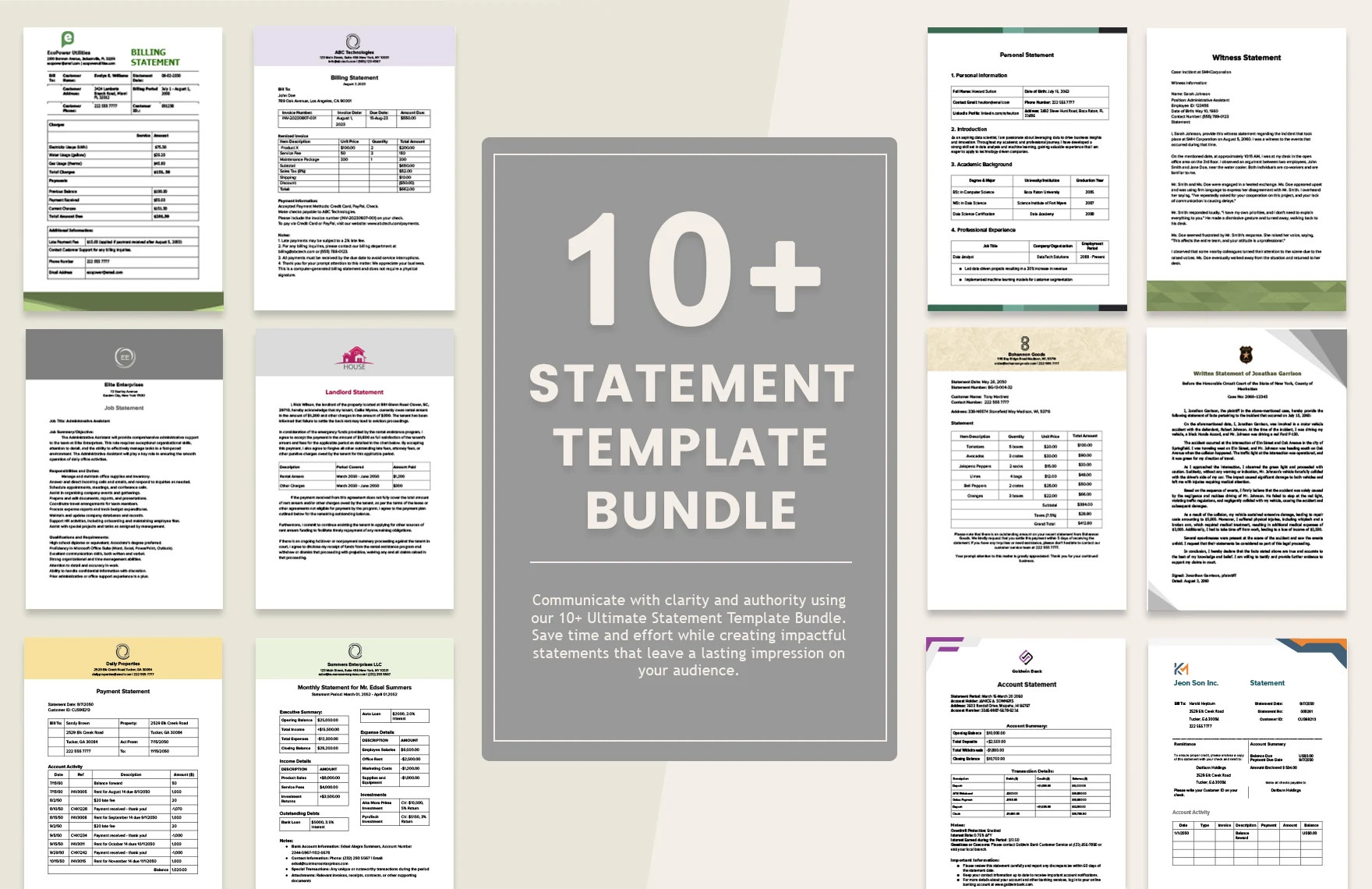A Step-by-Step Guide to Preparing Cash Flow Statements
It’s no secret that money drives businesses. To make money, they have to spend money. Owners of start-up companies and small solo ventures find the lack of cash flow difficult when starting a business. With many expenses and little money to shell out, a temporary line of credit will be needed as a temporary source of cash. An effective business plan also needs a thorough cash flow analysis. Without money on the table, how will a business pay its bills?

Statement Template Bundle

A Step-by-Step Guide to Preparing Cash Flow Statements
Purpose of Cash Flow Statement
A cash flow statement is a document containing a summary of a company’s inflows and outflows of cash and cash equivalents. The numbers you see on the document are important in business operations. Going by its definition, a cash flow allows a business to see where its money comes from and where it’s headed. If you’re holding an upper management position in a business, this document should catch your attention. A cash flow statement can affect a business’s budget. Parties preparing this shouldn’t commit any errors as its end result can determine if a business can stay afloat or not.
Types of Cash Flow

Before you get to that worksheet, here’s something you should know: no two cash flows are exactly alike. They’re usually categorized into three types, which are fully described below.
Operating Activities
This category covers the cash generated and spent from an establishment’s daily activities. Product/service sales and company expenses (advertising, marketing, rent, insurance, utilities, production, and benefits, to name a few) fall under this category. The standard practice for calculating operating cash flow is subtracting the cash inflow of operating activities from the cash outflow of operating activities. In this case, cash inflow is the revenue gained from sales. On the other hand, the cash outflow is the expenses incurred to create the revenue-generating products or services. The amount resulting from the computation is alternatively known as net cash flow.
Investing Activities
This refers to the money collected from and shelled out for assets and investments intended for an establishment’s long-term plans. Buying property and equipment are considered as investment purchases. If you’re worried about the negative cash flow that comes with investment activities, no need to press a panic button because that’s usually the case; many companies view it as investments themselves. Positive cash flows will only occur upon the disposal of those investments. Calculate cash flows by adding the money generated from assets sales and loan collections. Subtract that sum from the amount used to acquire those loans and assets.
Financing Activities
Going by its name, the cash flow under this type is generated from financial activities conducted for a business’s benefit. These activities include issuance or repurchase of stocks and issuance or repurchase of debt. This category is indicative of a business’s structure, financial health, and strength. This is done by showing the amounts going to owners and investors and the money coming in. If your business has a simple ownership structure, this type may not be as prevalent as it is in businesses with complex ownership structures. To calculate this cash flow, just subtract the cash inflows from your financing activities from the cash outflows.
Methods for Preparing a Cash Flow Statement

There are two commonly used methods for preparing cash flow statements: direct and indirect. Why don’t we expound on those two methods and see how they work? This should help you choose an option in the event of having to prepare one.
Direct Method
This is also known as an income statement method. This requires you to add your business’ actual cash inflows and outflows from its operations. The direct method is more detailed when describing operating cash flow accounts. However, preparing a statement of cash flows through this method eats up a lot of time. Here’s an example of calculating cash flow through the direct method. Let’s say you’re computing the cash flow for the cash receipts from customers. All you have to do is add the net sales and beginning accounts receivable, then subtract that sum from the ending accounts receivable.
Indirect Method
In this method, the net income is adjusted due to changes in balance sheet accounts. This is done to compute the amount of cash from operating activities. To prepare a cash flow statement under this method, start off with loss or net income in the first line. The lines that follow it should show the gains and losses in assets and liabilities accounts. These amounts will either be added to or subtracted from the net income; this will depend on the item’s cash impact. In terms of preparation, this is simpler than the direct method. Since most companies’ records are kept on an accrual basis, this saves them a ton of time.
Difference Between Direct and Indirect Methods
What sets these two methods apart from each other is cash flows that come from operating activities. Let’s compare how they present it. In the direct method, the paid and received cash amounts from corporations are listed. Take note that this method only measures cash that’s been received. On the other hand, the indirect method usually begins with the net income. Businesses have the option to choose one method over the other. However, most companies prefer using the indirect method. As explained earlier, this is due to how simple it is. Most also use it to maintain consistency in accounting.
How to Use Cash Flow

Here’s an explanation on how to use cash flow. For this article, let’s use the indirect method since it’s commonly used.
Figure Out Your Net Income First
Refer to your income statement to determine the amount. Take note that the net income and your cash flow aren’t the same.
Turn Your Operating Activities’ Net Income into Net Cash
Make the appropriate changes to your accrual-based income statement to convert the net income to net cash. Include your noncash expenses as well.
Calculate the Remaining Types of Cash Flows
Once you’re through with calculating your operating activities, all you have to work on is calculating the net cash flows for your investing and financial activities. Add the values of the 3 cash flows to find out your net increase or decrease during a specified period.
Those numbers on that cash flow statement can be dizzying. However, those numbers are detrimental to your business’s future. Your cash flow statement isn’t just for handling finances. It allows you to create realistic strategies for marketing, sales, and risk management. Don’t let negative numbers fool you. While they may look bad, they can actually help you grow your business.






